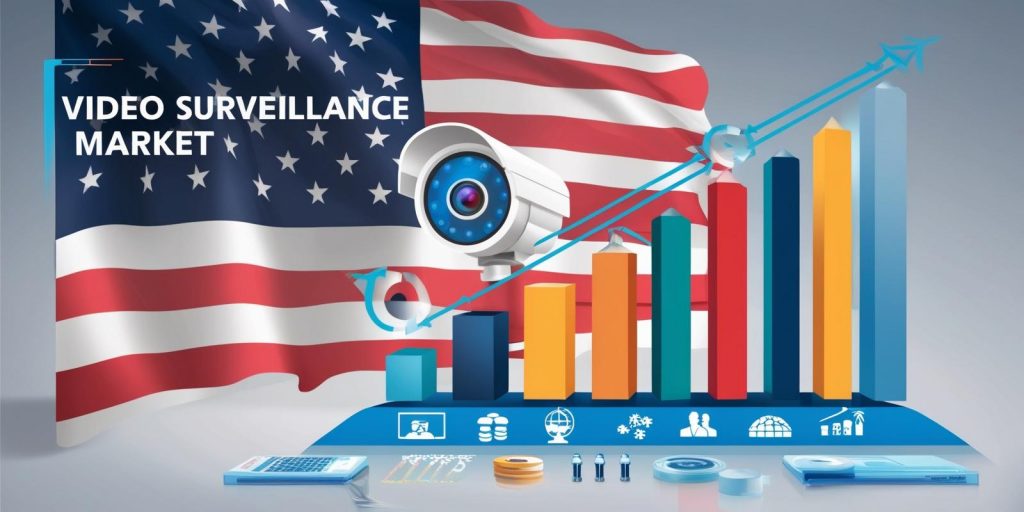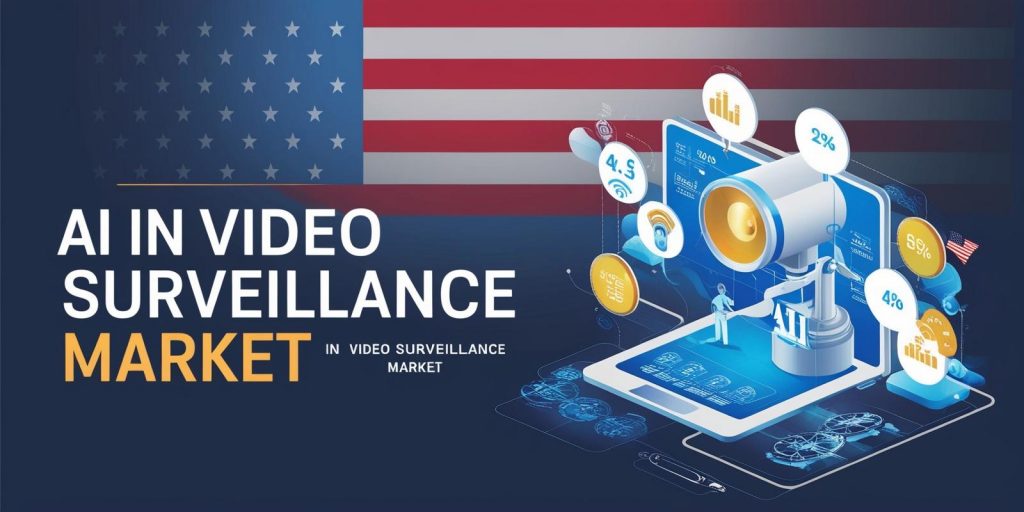The landscape of artificial intelligence (AI) in video surveillance has undergone significant shifts over the last decade, particularly in light of global political changes. Among the most impactful events was the imposition of tariffs during the Trump administration. These trade policies not only disrupted global supply chains but also affected industries that had heavily relied on international trade. The AI-driven video surveillance market, in particular, experienced both growth and disruption as a result. Explore how the AI in video surveillance market evolved from pre-trump tariff growth to post-tariff disruption, identifying the key changes, challenges, and opportunities that arose from these shifts.

Pre-Trump Tariff Growth: AI in Video Surveillance Soars
Before the onset of tariffs, the AI-driven video surveillance industry was riding a wave of innovation and growth.AI technologies like machine learning, facial recognition, and advanced video analytics began to transform the traditional video surveillance market, enabling smarter and more efficient security systems.
-
Technological Advancements:
-
AI-Powered Analytics: By leveraging deep learning and machine vision, AI systems were able to go beyond simple video recording and playback. They provided real-time analytics, such as facial recognition, object detection, and anomaly identification. These features made surveillance systems more efficient, as they could automatically identify potential security threats or patterns without the need for constant human monitoring.
-
Cloud Integration: Cloud-based surveillance solutions became more popular, enabling businesses to store and process massive amounts of video data off-site. This made surveillance more scalable and accessible for businesses of all sizes, as it allowed them to manage data more effectively and reduce the need for on-premises infrastructure.
-
-
Market Expansion:
-
Increased Demand Across Sectors: The market for AI in video surveillance expanded rapidly across several sectors, including retail, government, transportation, and critical infrastructure. Businesses increasingly adopted these solutions to improve security and enhance operational efficiencies. The introduction of AI-powered systems was seen as a major upgrade over traditional surveillance methods.
-
Integration with IoT and Smart Cities: With the rise of the Internet of Things (IoT), AI in video surveillance began to integrate with smart city infrastructure. Surveillance systems became part of broader efforts to create smarter, safer cities through connected devices and data analysis. AI-powered video surveillance systems were able to communicate with other IoT devices, creating a more comprehensive security ecosystem.
-
-
Cost Efficiency:
-
Lower Costs of Components: In the pre-tariff era, surveillance companies were able to import affordable video surveillance components from China and other low-cost manufacturing regions. This allowed for cost-effective production and contributed to the broader adoption of AI-powered systems, as businesses could deploy them without breaking the bank.
-
Increased Return on Investment (ROI): The improved capabilities of AI-powered surveillance systems justified their higher upfront costs. As a result, organizations found themselves getting a higher return on investment (ROI) due to reduced labor costs, fewer false alarms, and more efficient security operations.
-
Request Trump Tariff Threat Assessment Analysis Now @ https://www.marketsandmarkets.com/pdfdownloadNew.asp?id=84216922

Post-Tariff Disruption: Challenges and Changes
When the Trump administration imposed tariffs on Chinese goods, the video surveillance market was forced to adapt to new challenges. The industry faced supply chain disruptions, rising costs of components, and a shift in the global trade landscape, creating both obstacles and opportunities for businesses in the AI-driven surveillance sector.
-
Supply Chain Disruptions:
-
Rising Costs of Components: With tariffs targeting Chinese imports, the cost of key components like chips, sensors, and other surveillance hardware saw a significant increase. Many companies that relied on these parts for their AI-powered surveillance systems found themselves facing higher production costs. This disrupted their ability to provide affordable solutions to the market.
-
Supply Chain Shifts: Companies that once relied on Chinese manufacturers were forced to explore alternatives in other countries, such as Southeast Asia, Mexico, and Eastern Europe. This shift in supply chains resulted in delays, increased shipping costs, and challenges in maintaining the same level of efficiency in production.
-
-
Increased Costs for Consumers:
-
Price Hikes: As manufacturers faced higher costs for components, these expenses were passed down to consumers, leading to price hikes in AI-driven surveillance solutions. The added financial burden meant that small and medium-sized enterprises (SMEs) struggled to adopt these systems, which had previously been within their budgets.
-
Focus on Cost-Effective Solutions: To offset the impact of tariffs, some businesses began to shift towards more cost-effective AI surveillance solutions. These included offering basic versions of surveillance systems that emphasized essential features like motion detection and remote monitoring, often without the more advanced AI capabilities that had originally set the market apart.
-
-
Innovation Amid Disruption:
-
Focus on Edge Computing: As cloud-based solutions became more expensive due to increased data transfer and storage costs, edge computing emerged as a cost-effective alternative. Edge AI allows surveillance data to be processed locally, on-site, reducing the need for expensive data storage and improving processing speeds.
-
Shift Toward AI Software and Analytics: To mitigate hardware cost increases, many companies in the AI video surveillance market started to focus more on the software and analytics side of the equation. By providing software that could be integrated with existing surveillance infrastructure, companies were able to offer AI-powered capabilities at a lower cost.
-
-
Regulatory Pressures:
-
Data Privacy Concerns: As the demand for AI in video surveillance grew, so did concerns about privacy and the ethical use of surveillance technology. In the wake of the tariffs, some businesses found themselves navigating a complicated regulatory environment, especially with the introduction of new privacy laws in various regions like the EU’s GDPR and California’s CCPA.
-
Ethical AI: The pressure to ensure that AI was used responsibly led many companies to develop more transparent and ethical AI systems, particularly when it came to facial recognition and surveillance in public spaces. Some companies even scaled back their use of certain technologies to avoid backlash and regulatory scrutiny.
-
Opportunities in the Post-Tariff Era
Despite the challenges posed by the tariffs, the AI in video surveillance market also found new avenues for growth in the post-tariff landscape.
-
Domestic Manufacturing Growth: The tariffs incentivized companies to bring manufacturing closer to home, which reduced their dependence on overseas suppliers and gave them more control over production quality and timelines. This trend toward reshoring also created jobs and innovation in local markets.
-
Cloud & Edge Computing Synergy: The combination of cloud-based solutions and edge computing allowed companies to offer more flexible and scalable surveillance systems that could balance local processing power and centralized data storage. This hybrid approach helped businesses lower costs while maintaining the advanced capabilities of AI surveillance.
-
AI for Critical Infrastructure: The need to protect critical infrastructure in an increasingly uncertain world drove demand for AI-powered surveillance solutions in sectors like energy, transportation, and government. This increased demand created growth opportunities for companies that specialized in these markets.
-
AI-Powered Public Safety: AI-powered surveillance has increasingly been adopted by law enforcement agencies, helping them analyze footage more quickly, detect suspicious activity, and prevent crime. This trend is expected to continue, with AI systems being integrated into broader public safety and smart city initiatives.
